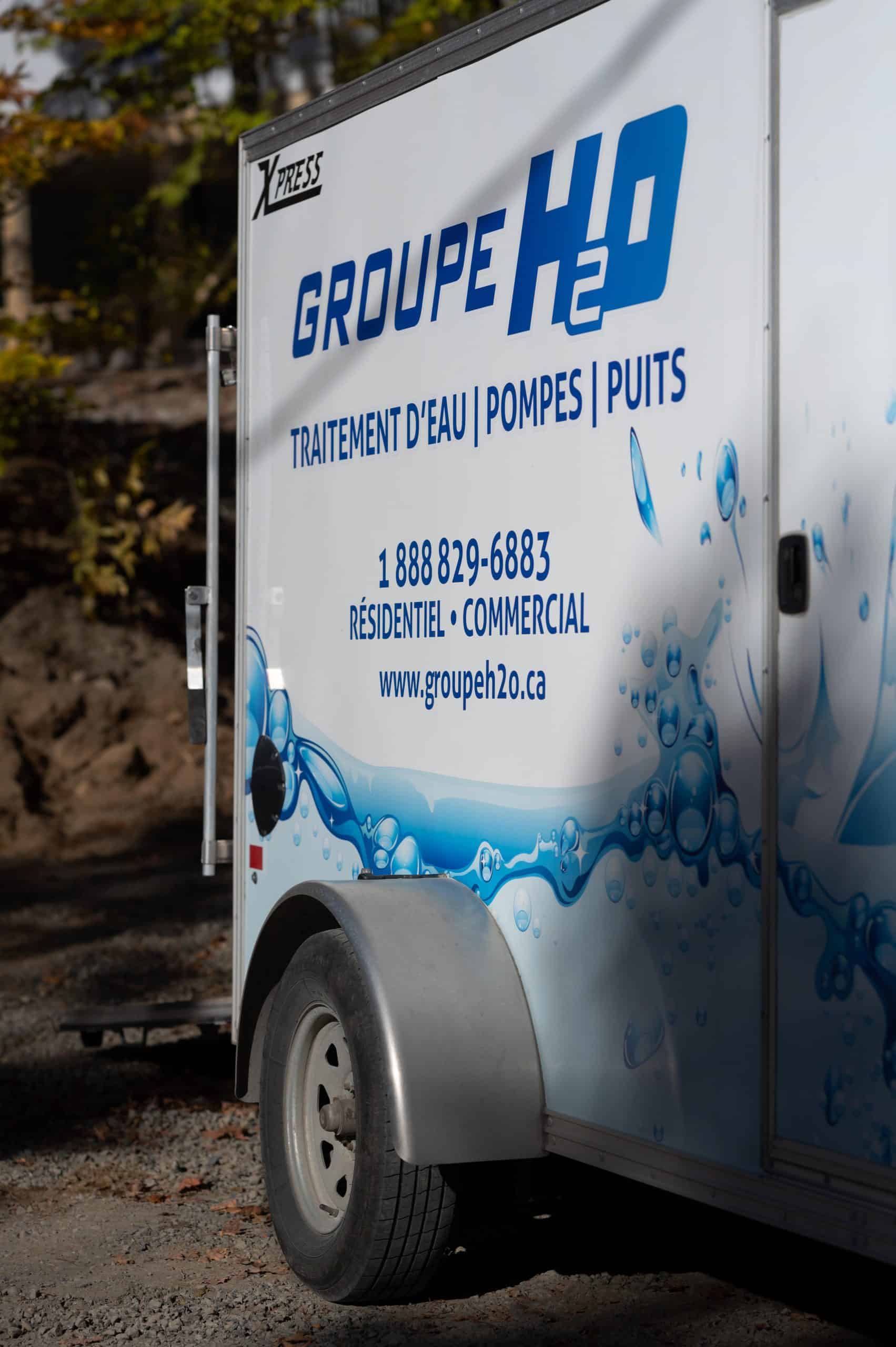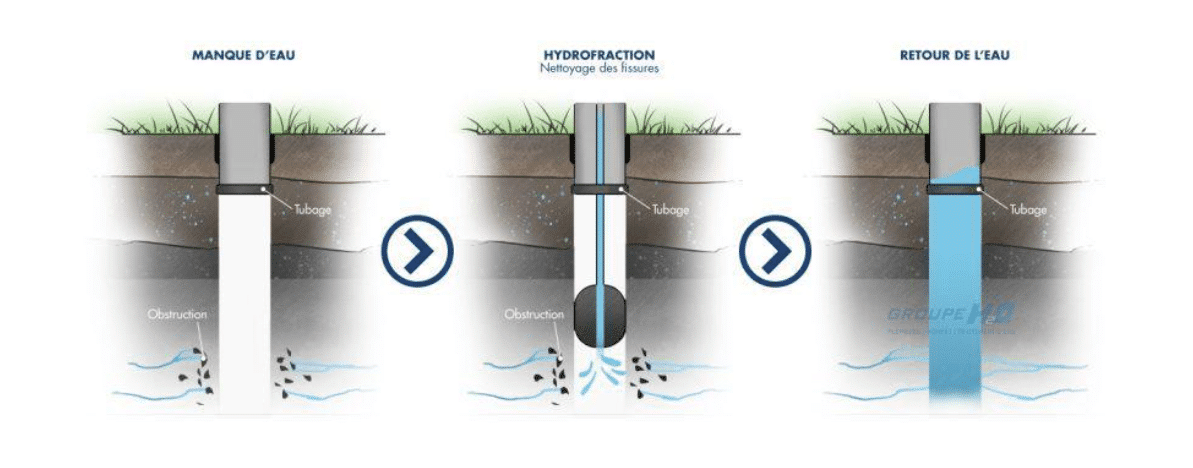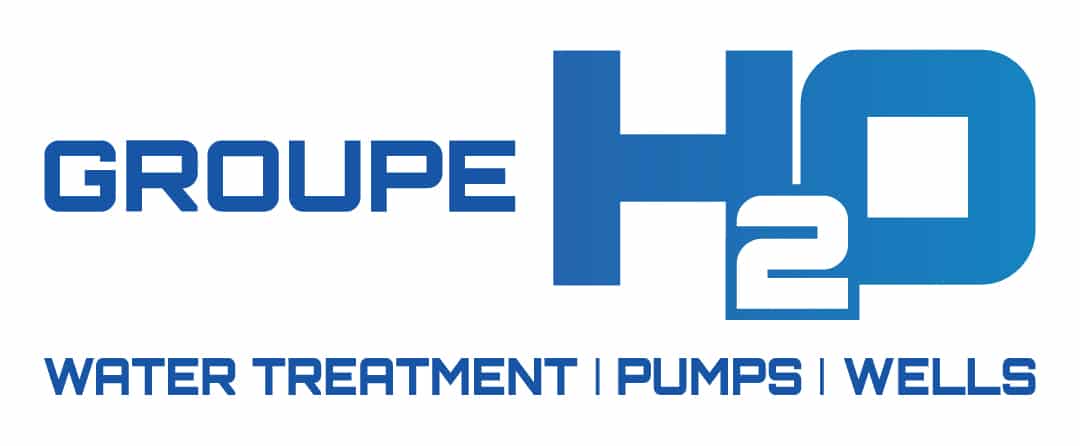Well maintenance and repair
You need to perform routine disinfection of your well or your water test reveals the presence of microbes. Or, your well is not working as well as it used to or is not getting enough water.
Having a well requires maintenance, and sometimes also some repairs. We can help you.
We offer the following services :
For artesian wells :
For surface wells :

Disinfection of an artesian well
Normally, water from an artesian well does not contain bacteria. However, it may still be necessary to disinfect your well in certain situations.
Disinfection is used to eliminate any microbes that may have infiltrated your well and contaminated your water.
If this chore seems difficult to you, entrust it to us!
We carry out the disinfection over two days. During this time, you cannot use your water.
The 1st day
- We calculate the amount of bleach required based on the size of your well and proceed with the chlorination.
- We run water through the pipes from the outside faucet of your home until it smells like bleach.
- We let the chlorinated water sit in the pipes and in the well for 24 hours.
The 2nd day
- We add sodium thiosulfate to your well water.
This substance is a type of salt that dechlorinates water before returning it to your septic tank or to the environment. This product is safe for your health and protects the environment.
- We are again circulating water through the pipes between the house and the well.
Our disinfection service includes the analysis of your water. We take three samples of your water and send them to an accredited laboratory for analysis.
Before disinfection:
We have the physico-chemical parameters of your water analyzed, i.e. we check its concentration in metals and minerals.
Why analyze physico-chemical parameters?
This step is especially important if you are in the process of selling or buying a home. This allows us to know more quickly the quality of the water and if a water treatment system is required.
It is also useful in case the disinfection does not work. We will then need to know the parameters of your water to design an appropriate treatment system.
After disinfection:
Our technicians take samples of your water 10 days and 30 days after disinfection. We then ask the laboratory to analyze the microbiological parameters of your water. This allows us to verify that the disinfection has worked and that your well is not becoming contaminated again.
Disinfection does not always work. Bacteria and other microbes can be stubborn!
In the event that the analysis reveals that bacteria are still present after 30 days, we have a solution for you. We can treat the water with a UV disinfection system.
Disinfection of a surface well
Water from a surface well is more likely to be contaminated than water from an artesian well. Its quality is influenced by everything that happens around your well.
The water may therefore contain total coliforms, atypical colonies and sometimes even fecal coliforms, i.e. bacteria that come from human or animal excrement. That’s why it’s so important to disinfect your well.
We carry out the disinfection over two days. During this time, you cannot use your water.
The 1st day
- We calculate the amount of bleach required based on the size of your well and proceed with the chlorination.
- We water the walls of the well with a gas pump.
Uh! No, we don’t go down your well to scrub the walls… the pump does the job perfectly!
- We remove any debris that may be in the well, including small animals, using a diaphragm pump.
- We run water through the pipes from the faucet outside your home until it smells like bleach.
- We let the chlorinated water sit in the pipes and in the well for 24 hours.
The 2nd day
- We add sodium thiosulfate to your well water.
This substance is a type of salt that dechlorinates water before returning it to your septic tank or to the environment. This product is safe for your health and protects the environment.
- We are again circulating water through the pipes between the house and the well.
Our disinfection service includes the analysis of your water. We take three samples of your water and send them to an accredited laboratory for analysis.
Before disinfection:
We have the physico-chemical parameters of your water analyzed, i.e. we check its concentration in metals and minerals.
Why analyze physico-chemical parameters?
This step is especially important if you are in the process of selling or buying a home. This allows us to know more quickly the quality of the water and if a water treatment system is required.
It is also useful in case the disinfection does not work. We will then need to know the parameters of your water to design an appropriate treatment system.
After disinfection:
Our technicians take samples of your water 10 days and 30 days after disinfection. We then ask the laboratory to analyze the microbiological parameters of your water. This allows us to verify that the disinfection has worked and that your well is not becoming contaminated again.
Disinfection does not always work. Bacteria and other microbes can be stubborn!
In the event that the analysis reveals that bacteria are still present after 30 days, we have a solution for you. We can treat the water with a UV disinfection system.
- UV disinfection system
Cleaning an artesian well by hydrofracturing
If you are running out of water, your artesian well is not supplying you with enough water or you want to start using an old well again, our hydrofracturing cleaning service may be your solution.
This is a cleaning technique that maximizes the amount of water in a well or increases its flow. It is also a very efficient and economical solution! In the vast majority of cases, hydrofracturing can increase the water flow rate by 100% to 400%.
The water in an artesian well comes from groundwater that flows through cracks in the rock deep underground. These cracks are also called “veins” or “fractures”. These cracks can sometimes be blocked by sediment, deposits and stone dust that prevent water from reaching the well.
Hydrofracturing consists of injecting water under pressure into the well to push out anything that obstructs the fissures. With the pressure, we open or increase in a natural way the cracks already present in the rock. This then allows the water to enter the well more easily. This allows the well to provide more water at a higher flow rate.

Repairing a surface well with a gelinite tile
If your surface well is old, you may notice that the perforated tile at the bottom of your well is deteriorating.
Thankfully, there’s no need to replace your well! We can repair it with a gelinite tile. Gelinite is a concrete tile composed of an alloy of cement and inert carbon.
Using a small workshop crane, we lower the gelinite tile to the bottom of the shaft.
Once the tile is installed, we fill the space between the wall and the tile with gravel. This is very effective in extending the life of your well.
All the new surface wells we install are made of gelinite.
Gelatinite filter wells can hold a large volume of water. Their wall acts like a sponge and does not clog over time. Thus, they maintain a good water yield and permanent strength.
- The gelinite well
Deepening a surface well with a filter tip
You have a surface well and are running out of water. There is a solution to avoid having to start over with a new well. We can install a filter tip inside your existing well.
The filter tip is a perforated, pointed tube. The holes are large enough to let water through, and small enough to filter it. We insert the tip at the bottom of the surface well until it reaches the water table.
This solution works well, especially in soils composed of sand or small gravel.
The filter tip is not an option for a new drinking water supply. Rather, it is an alternative and last resort when a surface well no longer provides enough water.
